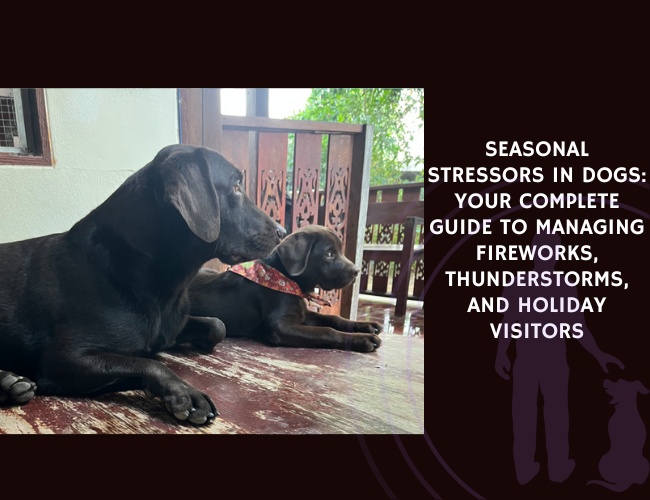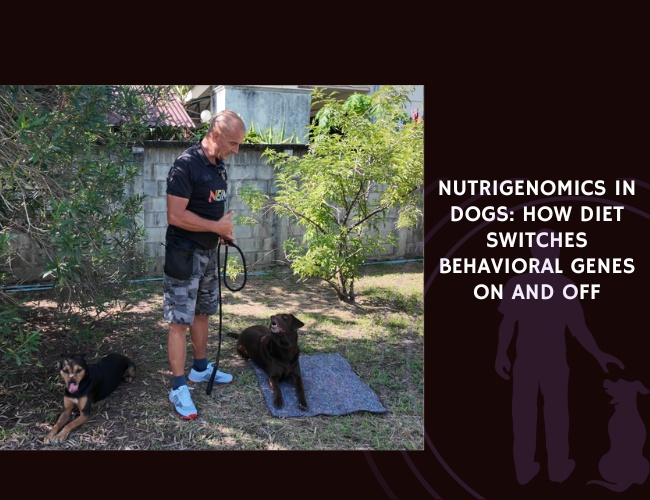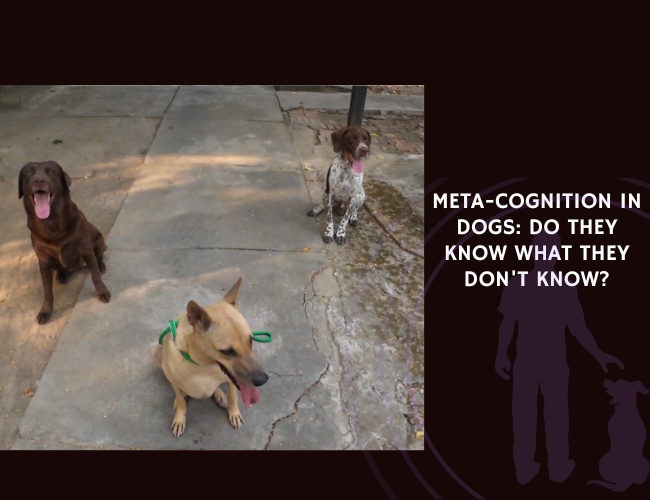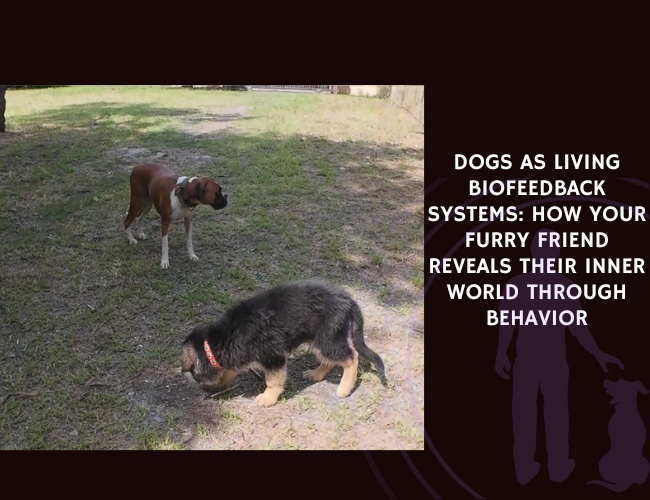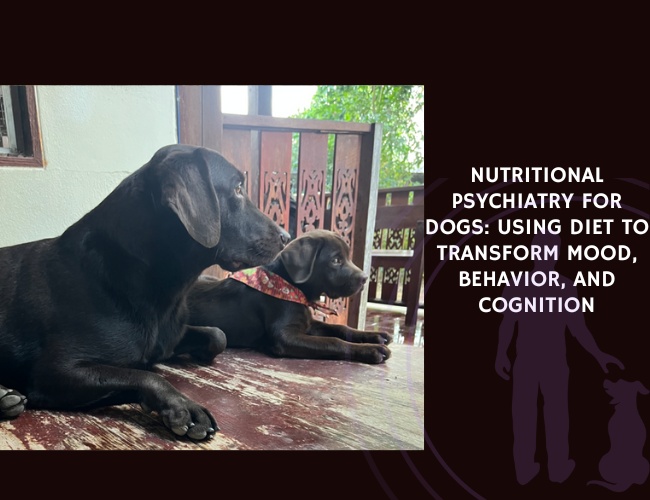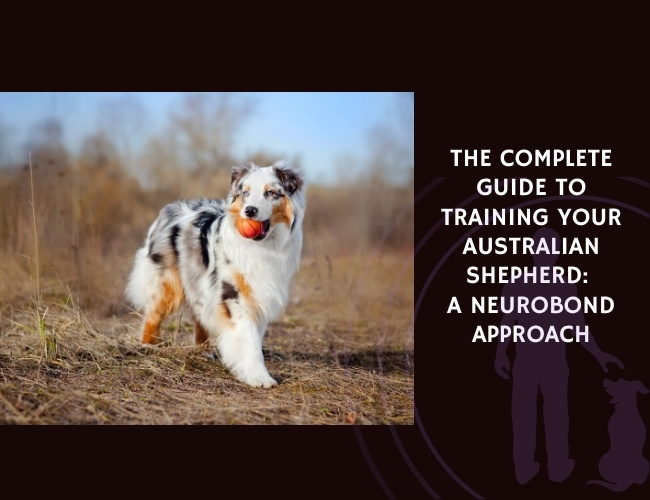Introduction: Understanding Your Dog’s Seasonal Anxiety
Every year, as seasons change and holidays approach, millions of dogs experience profound stress that can transform your normally confident companion into a trembling, anxious shadow of themselves. Did you know that nearly half of all dogs show significant fear responses to fireworks, while countless others struggle with thunderstorms, holiday visitors, and seasonal disruptions to their routine? You’re not alone if you’ve watched your furry friend pace nervously during a storm or hide under the bed when relatives arrive for the holidays.
Understanding seasonal stressors isn’t just about managing a few difficult nights each year—it’s about recognizing how these experiences shape your dog’s emotional wellbeing and the precious bond you share. From the neurological pathways that process fear to the genetic factors that make some dogs more vulnerable than others, we’ll guide you through everything you need to know to help your companion navigate these challenging times with confidence and security.
Character & Behavior: How Dogs Experience Seasonal Stress
The Canine Stress Response System
Your dog’s brain processes stress through remarkably sophisticated pathways that evolved to keep them safe from danger. When your furry friend encounters a stressor—whether it’s a thunderclap or doorbell—their hypothalamic-pituitary-adrenal (HPA) axis springs into action. This biological alarm system can increase cortisol secretion by 10 to 12 times normal levels, fundamentally altering how your dog thinks, feels, and behaves.
The Physical Signs You Might Notice:
- Trembling that starts subtly and intensifies
- Panting even in cool temperatures
- Dilated pupils and hypervigilance
- Seeking hiding spots or attempting escape
- Destructive behaviors they’d never normally display
- Loss of bladder or bowel control in severe cases
What makes seasonal stressors particularly challenging is their unpredictability from your dog’s perspective. While you know fireworks happen on specific holidays, your companion experiences them as random, inexplicable threats that shatter their sense of safety. This unpredictability can cause stress responses that persist long after the actual trigger has passed—research shows that while 75% of fearful dogs recover by the next morning after fireworks, 12% take 3-7 days for full recovery, with some taking weeks or months.
Breed and Individual Differences
Not all dogs experience seasonal stress equally, and understanding your companion’s unique vulnerability helps you provide targeted support. Genetic research reveals that noise sensitivity has a heritability factor of 0.28 for firework fear, meaning your dog’s breed and lineage significantly influence their stress response.
Dogs at Higher Risk Include:
- Herding breeds with heightened environmental awareness
- Dogs with naturally anxious temperaments
- Senior dogs experiencing cognitive changes
- Rescue dogs with unknown trauma histories
- Dogs living in urban environments with constant stimulation
Interestingly, dogs living with three or more other canine companions show higher chronic stress markers than those living alone or with one companion, suggesting that social dynamics play a complex role in stress management. Your dog’s individual history, from their earliest puppyhood experiences to recent life changes, shapes how they’ll respond to seasonal stressors. 🐾
Vocalization & Communication: Understanding How Your Dog “Talks” During Stress
The Language of Fear
When seasonal stressors strike, your dog communicates their distress through a rich vocabulary of sounds and body language that tells you exactly what they’re experiencing. Learning to read these signals helps you respond appropriately and provide comfort when they need it most.
Vocal Stress Signals:
- High-pitched whining that increases in intensity
- Barking that sounds different from their usual alert bark
- Howling or crying, especially during storms
- Unusual silence in normally vocal dogs
During fireworks, research shows that backwards-directed ear position is the strongest behavioral indicator of stress (with an effect size of 0.69), accompanied by increased locomotion and panting. You might notice your dog’s entire communication style changes—a normally independent dog might become velcro-like, following you everywhere, while a typically affectionate companion might withdraw completely.
Body Language During Seasonal Stress
Your dog’s body becomes an eloquent storyteller during stressful events, conveying messages that words never could. Understanding these physical communications helps you recognize stress before it escalates to panic.
Progressive Stress Indicators:
- Early Warning Signs: Lip licking, yawning (though interestingly, these don’t always increase during fireworks)
- Escalating Stress: Trembling, pacing, inability to settle
- Severe Distress: Attempts to escape, destructive behavior, complete shutdown
The fascinating aspect of canine stress communication is how it varies with context. During thunderstorms, dogs often exhibit classic fear signs like hiding and whining, with cortisol levels increasing by 207% and not returning to baseline for over 40 minutes. This prolonged physiological response explains why your dog might remain anxious long after the storm passes.
The Science Behind Noise Phobias
Neurological Processing of Sound
Your dog’s auditory world differs dramatically from yours—they hear more than twice as many frequencies as humans and can detect sounds from roughly four times further away. This extraordinary hearing, while advantageous for survival, makes them exquisitely vulnerable to noise-related stress.
When a firework explodes or thunder rumbles, your dog’s brain must instantly determine whether this sound represents danger. The amygdala, your dog’s fear-processing center, can become hypersensitive through repeated exposure or single traumatic events. This hypersensitivity means that even distant fireworks or mild thunder can trigger the same intense fear response as if the threat were immediate and severe.
Why Some Sounds Are Worse Than Others:
- High-frequency, intermittent noises trigger stronger responses than low-frequency, continuous sounds
- Sudden onset without warning prevents mental preparation
- Inability to locate the sound source increases anxiety
- Association with other stressors (like static electricity during storms) compounds fear
The Stress Hormone Cascade
Understanding the biochemistry of stress helps explain why your dog can’t simply “calm down” when you tell them everything’s okay. When stress hits, their body launches a complex hormonal cascade that evolved to ensure survival.
The process begins in the hypothalamus, which secretes corticotropin-releasing hormone (CRH). This triggers the pituitary gland to release adrenocorticotropic hormone (ACTH), which then stimulates the adrenal glands to flood the bloodstream with cortisol. This entire cascade happens within seconds, preparing your dog’s body for fight or flight—neither of which are appropriate responses to fireworks or thunder.
What’s particularly concerning is that chronic exposure to seasonal stressors can lead to HPA axis dysregulation. Dogs with long-standing noise phobias often show paradoxically lower baseline cortisol levels, suggesting their stress response system has become exhausted from overuse—a condition sometimes called “vital exhaustion” in the research literature.
Training & Education: Building Resilience Against Seasonal Stressors
Prevention Through Early Intervention
The most effective approach to seasonal stress is preventing it from developing in the first place. Research shows that the majority of dogs develop firework fears in their first year of life, making puppyhood the critical window for intervention.
Early Prevention Strategies:
- Positive Association Training: Pairing distant storm sounds or recorded fireworks with high-value treats
- Gradual Exposure: Starting with very quiet recordings and slowly increasing volume over weeks
- Confidence Building: Regular exposure to various sounds, textures, and experiences
- Social Learning: Allowing puppies to observe calm, confident adult dogs during mild stressors
Training puppies or non-fearful adults to associate noise with positive stimuli proves highly effective in preventing later development of firework fears. However, if your dog already shows fear, don’t despair—evidence-based training methods can still make a significant difference.
Counterconditioning and Desensitization Protocols
For dogs already experiencing seasonal stress, systematic behavior modification offers hope. Research involving 694 dogs found counterconditioning to be the most successful training technique, with effectiveness over 70%.
The Counterconditioning Process:
- Establish Baseline: Identify the lowest intensity trigger that causes mild interest without fear
- Create Positive Associations: Pair this mild trigger with extraordinary rewards
- Gradual Progression: Slowly increase trigger intensity over multiple sessions
- Maintain Sub-Threshold Exposure: Never push your dog into panic zone
- Generalize Learning: Practice in different locations and contexts
A combination of systematic desensitization and counterconditioning proved successful for 100% of 91 dogs in controlled studies, with greater efficacy when techniques were presented concurrently rather than separately. The key lies in patience and consistency—rushing the process often leads to setbacks.
Relaxation Training Techniques
Teaching your dog to relax on cue provides a powerful tool for managing seasonal stress. Relaxation training showed 69% effectiveness in research studies, offering a complementary approach to counterconditioning.
Building a Relaxation Protocol:
- Start in a completely calm environment
- Reward naturally relaxed behaviors (lying down, soft eyes, slow breathing)
- Add a specific cue word like “settle” or “easy”
- Practice in gradually more stimulating environments
- Use during mild stressors before escalation
The beauty of relaxation training is that it gives your dog an alternative behavior to perform when stressed. Instead of pacing or hiding, they have a trained response that naturally reduces anxiety through behavioral feedback loops. 🧠

Environmental Management Strategies
Creating Safe Spaces
Your home environment plays a crucial role in how your dog experiences seasonal stressors. Strategic modifications can dramatically reduce the intensity of triggers and provide security when anxiety strikes.
Optimizing Your Home for Stress Reduction:
- Sound Dampening: Heavy curtains, rugs, and soft furnishings absorb sound
- Visual Barriers: Blocking windows prevents visual triggers from fireworks or lightning
- Safe Rooms: Windowless interior rooms offer maximum protection from stimuli
- White Noise: Fans, air conditioners, or sound machines mask distant noises
Research shows that staying in windowless rooms while using masking sounds like loud fans and repetitive drum beats significantly reduces stress responses during thunder or fireworks. The key is preparing these spaces before stress events occur, allowing your dog to associate them with safety and comfort.
Music and Acoustic Therapy
The therapeutic use of sound offers an innovative approach to managing seasonal stress. Studies demonstrate that music exposure activates both branches of the autonomic nervous system in dogs, potentially helping regulate stress responses.
Effective Acoustic Interventions:
- Classical music at moderate volume (specifically composed for dogs shows best results)
- Bioacoustic music designed to promote relaxation
- Brown noise or pink noise to mask sudden sounds
- Avoid: Loud rock music or sounds with sudden tempo changes
Interestingly, specially designed canine music showed higher effectiveness than generic classical music, suggesting that frequency ranges and rhythms tailored to canine hearing provide superior benefits. Start playing calming music before stressful events begin, creating a protective acoustic bubble around your anxious companion.
Nutritional and Nutraceutical Support
Dietary Interventions for Stress Management
What your dog eats can significantly influence their ability to cope with seasonal stressors. Research reveals that specific nutritional interventions can alter neurotransmitter production and stress hormone levels.
A groundbreaking study using a specialized nutraceutical diet containing hydrolyzed fish proteins, rice, pomegranate, valerian, rosemary, and other botanicals showed remarkable results within 45 days:
- Significant increases in serotonin, dopamine, and β-endorphins
- Measurable decreases in noradrenaline and cortisol
- Improved behavioral responses to stressors
Key Nutritional Components for Stress Reduction:
- L-Tryptophan: Precursor to serotonin, though individual responses vary
- Omega-3 Fatty Acids: Anti-inflammatory effects that may reduce anxiety
- B-Vitamins: Support nervous system function
- Magnesium: Natural muscle relaxant and nervous system support
Evidence-Based Supplements
The supplement market offers numerous products claiming to reduce canine anxiety, but research provides clarity on what actually works.
Scientifically Supported Options:
- Alpha-casozepine: Structurally similar to GABA with affinity for benzodiazepine receptors, showing consistent anxiety reduction
- Valerian and Passiflora Combination: Dogs receiving these supplements showed greater improvement and smaller cortisol increases than placebo groups
- Green Tea Extract (L-theanine): Promotes relaxation without sedation
- Adaptogenic Herbs: Ashwagandha and rhodiola show promise in preliminary studies
However, controlled research reveals mixed results—some studies indicate extra tryptophan alone doesn’t influence anxiety signs, highlighting the importance of comprehensive formulations rather than single ingredients. Always consult your veterinarian before starting any supplement regimen, especially if your dog takes other medications.
Holiday-Specific Stressors and Solutions
Managing Visitor Anxiety
For many dogs, especially those adopted during the pandemic, holiday gatherings with “outside” people represent their first major social challenge. The combination of new sounds, unfamiliar people, and altered routines can trigger overwhelming anxiety.
Preparing for Holiday Visitors:
- Pre-Event Conditioning: Practice having friends visit in controlled circumstances
- Scent Introduction: Have visitors leave an item of clothing days before arrival
- Gradual Exposure: Start with one visitor, then slowly increase numbers
- Escape Routes: Ensure your dog always has access to their safe space
- Management Tools: Consider baby gates to create visual contact without forced interaction
Research indicates that dogs in urban environments show increased fear of strangers compared to rural dogs, suggesting that regular exposure doesn’t always lead to habituation. This means your city dog might need extra support during holiday gatherings despite regular encounters with people.
Decoration and Routine Disruptions
Holiday decorations transform your dog’s familiar environment into an unpredictable landscape. Lights, moving decorations, and rearranged furniture create navigation challenges, particularly affecting older pets who rely on familiar spatial maps.
Minimizing Environmental Stress:
- Introduce decorations gradually over several days
- Maintain clear pathways to important resources (food, water, outside access)
- Avoid decorations at your dog’s eye level that might startle them
- Keep tinsel, ribbons, and small ornaments out of reach
- Preserve at least one room in its normal state as a retreat
The key insight from research is that environmental predictability strongly influences welfare. By maintaining some consistency amid holiday changes, you provide an anchor of stability that helps your dog cope with other stressors. 🎄
Supporting Different Life Stages
Puppy Considerations
Puppies experiencing their first seasonal stressors face unique challenges and opportunities. Their developing brains are remarkably plastic, making this period critical for shaping lifetime responses to stress.
Age-Specific Interventions for Puppies:
- 3-14 Weeks (Critical Socialization Period): Gentle exposure to recorded sounds at low volume
- 14-20 Weeks: Gradual intensity increases with consistent positive associations
- 5-12 Months: Maintenance training during actual seasonal events
- Adolescence (6-24 months): Continued support through fear periods
Research shows that dogs participating weekly in activities and training have significantly lower likelihood of developing fears compared to those participating only seldom. This highlights the importance of consistent, positive experiences throughout puppyhood.
Senior Dog Challenges
Older dogs face unique vulnerabilities to seasonal stressors. Age-related cognitive changes, hearing alterations, and reduced adaptability can intensify stress responses that were previously manageable.
Special Considerations for Senior Dogs:
- Cognitive Dysfunction: May cause increased confusion during stressful events
- Sensory Changes: Partial hearing loss might make sounds more startling
- Reduced Mobility: Difficulty accessing safe spaces increases anxiety
- Medication Interactions: Age-related medications may affect stress responses
- Comorbidities: Arthritis or other conditions compound stress-related discomfort
Research demonstrates that older dogs are more likely to show negative emotional responses to loud noises, with recovery times often extended compared to younger dogs. This necessitates earlier intervention and more comprehensive support strategies for senior companions. Your aging friend deserves extra patience and understanding as they navigate seasonal challenges with diminishing resources.
Startled. Overwhelmd. Vulnerable.
Stress rewires behavior. Seasonal triggers like fireworks and storms activate your dog’s HPA axis, flooding their system with cortisol and shifting them into survival mode. What seems sudden panic is biology at work.
Signals speak loudly. Trembling, panting, dilated pupils, or desperate hiding reveal an animal struggling to cope. These visible signs reflect deep internal strain that can linger far beyond the noisy night.

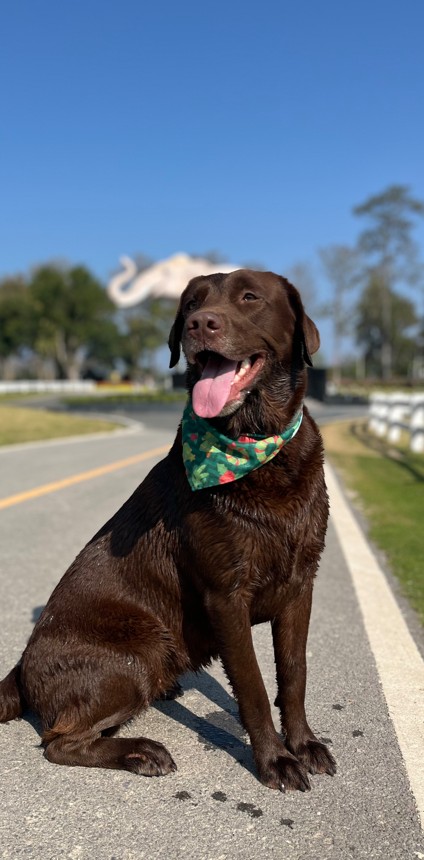
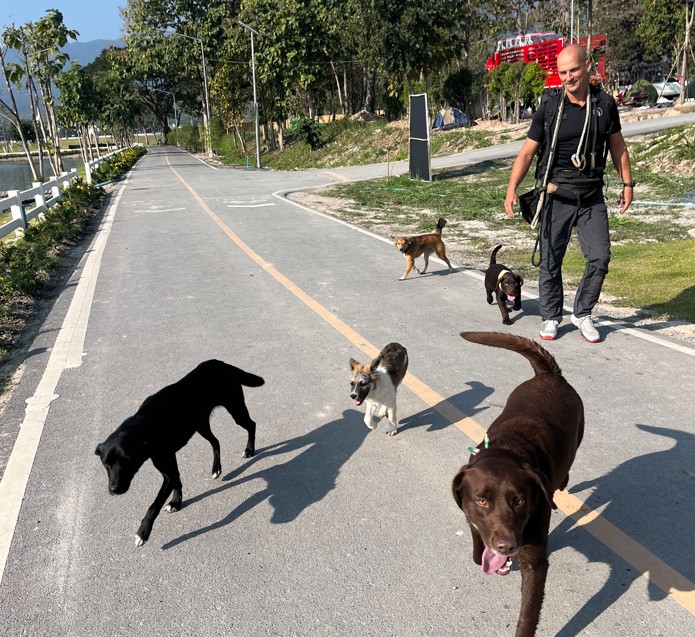
Genetics shape response. Some dogs inherit stronger noise sensitivities, making them more prone to seasonal stress. Recognizing these predispositions allows proactive care, turning frightening seasons into manageable experiences.
Emergency During-Event Protocols: Your Minute-by-Minute Action Plan
The “What Do I Do RIGHT NOW?” Guide
When fireworks suddenly explode or thunder crashes without warning, you need immediate, clear actions—not theory. This minute-by-minute protocol gives you exact steps to follow when your dog is in crisis.
IMMEDIATE RESPONSE (First 30 Seconds):
- Don’t Panic: Take one deep breath. Your dog is reading your energy
- Locate Your Dog: Note where they are but don’t chase if they’re hiding
- Safety Check: Ensure doors/windows are secured to prevent escape
- Grab Your Kit: Phone (for timing), treats, and calming tools if accessible
First 5 Minutes: Crisis Stabilization
Your actions in these critical first minutes set the tone for your dog’s entire stress response. Research shows that early intervention can reduce cortisol escalation by up to 40%.
Minutes 0-2: Initial Assessment Look at your dog and quickly categorize their stress level:
- MILD: Alert, looking around, may be panting, still takes treats
- MODERATE: Won’t take treats, trembling, seeking comfort or hiding
- SEVERE: Attempting escape, destructive behavior, loss of bladder control, complete shutdown
Minutes 2-5: Position Yourself Your physical presence matters more than any tool or technique:
- For Mild Stress: Sit normally where your dog can see you. Continue your activity (reading, watching TV) to signal normalcy
- For Moderate Stress: Sit on the floor at your dog’s level, about 3 feet away. Angle your body sideways (less confrontational)
- For Severe Stress: Position yourself between your dog and exit routes. Sit still and quiet, becoming a “safe landmark”
The 5-30 Minute Protocol: Active Support Phase
This phase determines whether your dog’s stress escalates or begins stabilizing. Every action should be deliberate and calm.
What to Say (The Script): Use these exact phrases in a low, slow voice:
- “You’re okay” (repeat every 2-3 minutes)
- “I’m here” (when they look at you)
- “Good dog” (for any calm behavior, even momentary)
- “Easy… easy” (long, drawn-out syllables during trembling)
What NEVER to Say:
- “It’s okay!” (high-pitched, excited—increases anxiety)
- “Don’t be scared” (they can’t control it)
- “Come here!” (demanding commands increase pressure)
- “Shhhh” (sharp sounds startle further)
- Any baby talk or excessive comforting (can reinforce fear)
Your Body Language Guide:
- Breathing: Slow, audible exhales every 30 seconds (dogs synchronize breathing)
- Eyes: Soft blinks, avoid direct staring, look at your phone occasionally
- Shoulders: Consciously drop them every few minutes
- Hands: Still and open, resting on your lap or floor
- Movement: Slow-motion only. Count to 3 before any position change
The 15-Minute Assessment Point: At 15 minutes, evaluate:
- Has trembling increased or decreased?
- Will they now take a treat? (Test with highest value option)
- Have they moved closer to you or further away?
- Is their breathing faster or starting to slow?
If Improving: Continue current protocol If Worsening: Move to “Severe Stress Emergency Protocol” below If No Change: Add one calming tool (music, pheromone spray, pressure wrap)
30 Minutes to 2 Hours: Sustained Management Phase
By 30 minutes, cortisol has peaked. Your job now is preventing re-escalation while supporting recovery initiation.
30-45 Minutes: The Plateau Phase
- Maintain your position but you can now read or use your phone normally
- Offer water in a bowl near them (don’t bring it to them)
- If they approach you, let them initiate contact
- Begin “behavioral anchoring”: Every 5 minutes, do something predictable (turn a page, sip water)
45-90 Minutes: Recovery Window Opens This is when most dogs begin showing recovery signs:
- Positive Signs: Stretching, yawning, shaking off, accepting treats, drinking water
- Continue Support: Don’t celebrate too obviously—remain calm and consistent
- Gentle Engagement: If they seek interaction, offer gentle massage or quiet talking
- Activity Option: For mild-moderate stress only: Offer a puzzle toy or chew
90-120 Minutes: Stabilization Phase
- Gradually return to normal household activities
- Keep background music or white noise on
- Offer a meal if it’s feeding time (eating indicates recovery)
- Allow access to full house if they want to explore
- Document what helped for next time
The Next 24 Hours: Recovery Consolidation
Research shows 75% of dogs recover by next morning, but your support remains crucial.
Night of the Event:
- Keep nightlights on if they seem unsettled
- Allow bedroom access even if normally restricted
- Don’t force normal routine if they’re not ready
- Expect possible interrupted sleep or neediness
Next Morning Assessment: Rate these on 1-5 scale (1=normal, 5=severely affected):
- Appetite at breakfast: ___
- Interest in morning walk: ___
- Response to normal cues: ___
- General energy level: ___
- Seeking/avoiding contact: ___
Score 5-10: Normal recovery trajectory Score 11-15: Extend support protocols for another 24 hours Score 16-25: Consider veterinary consultation
Decision Trees for Specific Behaviors
“My Dog is Destroying Things”
Is destruction aimed at escape (doors/windows)?
├─ YES → Block access, redirect to safe room, increase physical barriers
└─ NO → Is it displacement behavior (random items)?
├─ YES → Provide appropriate destruction outlet (cardboard box to shred)
└─ NO → Remove valuable items, allow behavior if it's self-soothing“My Dog Won’t Stop Pacing”
Has pacing lasted more than 20 minutes?
├─ YES → Try pattern interruption:
│ ├─ Drop treats in their path
│ ├─ Place obstacles (pillows) to alter route
│ └─ If continues → Allow it (it's self-soothing)
└─ NO → Monitor, it may resolve naturally“My Dog is Hiding and Won’t Come Out”
Can you see them and they're safe?
├─ YES → Leave them alone completely
│ ├─ Place water nearby
│ ├─ Check every 30 minutes visually
│ └─ Wait for self-emergence
└─ NO → Are they in a dangerous spot?
├─ YES → Gentle extraction necessary
└─ NO → Create comfort where they areSevere Stress Emergency Protocol
When your dog shows extreme panic, destructive escape attempts, or complete shutdown, implement this emergency protocol immediately.
IMMEDIATE ACTIONS:
- Contain: Close all interior doors to limit space
- Darken: Turn off lights, close curtains
- Muffle: Maximum white noise/music
- Distance: Give them complete space for 10 minutes
- Prepare: Ready emergency vet contact and consider medication if prescribed
After 10 Minutes:
- Sit at maximum distance while still visible
- No talking, no eye contact, no movement
- Wait for ANY behavior change
- When change occurs, quietly say “good”
- Gradually decrease distance over 30+ minutes
When to Seek Emergency Help:
- Self-injury from escape attempts
- Continuous panic for over 2 hours
- Complete inability to respond to you
- Seizure-like activity
- Difficulty breathing beyond panting
Real-Time Assessment Tools
The 3-Point Stress Check (Every 10 Minutes):
- Breathing Rate: Count breaths for 15 seconds, multiply by 4
- Normal: 10-30 breaths/minute
- Mild stress: 30-50 breaths/minute
- Severe stress: 50+ breaths/minute
- Response Test: Say their name quietly
- Looks at you = Mild-moderate stress
- Ear flick only = Moderate-severe stress
- No response = Severe stress
- Treat Test: Offer highest value treat
- Takes eagerly = Mild stress
- Takes hesitantly = Moderate stress
- Won’t take = Severe stress
Recovery Indicator Checklist: ✓ Accepts water ✓ Changes position voluntarily ✓ Makes eye contact ✓ Responds to name ✓ Takes treats ✓ Initiates movement ✓ Shows interest in surroundings ✓ Seeks or accepts contact
When you see 4+ indicators, active recovery has begun. 🧡

Breed-Specific Stress Responses and Management
Understanding Your Dog’s Genetic Blueprint
Your dog’s breed isn’t just about appearance—it fundamentally shapes how they experience and process seasonal stressors. Research revealing heritability factors of 0.28 for firework fear confirms what many owners observe: some breeds are simply wired to be more reactive to environmental stressors.
The Top 10 Most Vulnerable Breeds
Based on clinical data and breed-specific stress markers, these breeds consistently show heightened vulnerability to seasonal stressors:
- Vulnerability Factor: Hypervigilance and environmental awareness
- Specific Challenges: Their intelligence means they anticipate and remember stressors
- Management Strategy: Requires intensive mental redirection during events. Puzzle toys and complex training tasks can channel their focus away from stressors
- Critical Note: Research specifically found lower baseline cortisol in noise-phobic Border Collies, suggesting chronic stress exhaustion
- Vulnerability Factor: Protective instincts interpret sounds as threats
- Specific Challenges: May become defensively aggressive during stress
- Management Strategy: Provide a “job” during stressful events (holding a toy, “guarding” a specific spot)
- Success Tip: Responds exceptionally well to confidence-building exercises
- Vulnerability Factor: Genetic predisposition to anxiety disorders
- Specific Challenges: Prone to stress-induced aggression (“Cocker rage”)
- Management Strategy: Requires consistent, predictable responses. Avoid overwhelming comfort
- Medical Note: Higher likelihood of requiring pharmaceutical support
4. Cavalier King Charles Spaniel
- Vulnerability Factor: Bred for sensitivity to human emotions
- Specific Challenges: Absorbs owner’s anxiety, amplifying their own stress
- Management Strategy: Owner must model extreme calm. Benefits from compression garments
- Special Consideration: High prevalence of cardiac issues means stress monitoring is critical
5. Lagotto Romagnolo
- Vulnerability Factor: Bred for acute hearing (truffle hunting)
- Specific Challenges: Hears sounds at greater distances and intensity
- Management Strategy: Requires maximum sound dampening, benefits from underground/basement safe spaces
- Unique Approach: White noise less effective; needs brown noise or specific frequency masking
- Vulnerability Factor: Herding breed hypervigilance
- Specific Challenges: Attempts to “control” the stressor through movement
- Management Strategy: Structured activities during stress (agility patterns, trick sequences)
- Important: Never restrict movement completely—provide safe pacing space
7. Vizsla
- Vulnerability Factor: Velcro dog temperament increases stress contagion
- Specific Challenges: Separation during stressors multiplies anxiety
- Management Strategy: Constant calm presence required. Benefits from body contact
- Training Focus: Independence training before stress season crucial
**8. Chihuahua
- Vulnerability Factor: Size relative to sound waves creates overwhelming sensation
- Specific Challenges: Trembling can lead to dangerous hypoglycemia
- Management Strategy: Warm, enclosed spaces. Monitor blood sugar during extended stress
- Critical Safety: Never leave alone during stressors—escape attempts despite size
9. Beagle
- Vulnerability Factor: Howling breeds vocalize stress, creating feedback loop
- Specific Challenges: Vocalization disturbs neighbors, adding owner stress
- Management Strategy: Pre-emptive calming before they begin vocalizing
- Practical Tip: Recording of other dogs howling can redirect their vocalization instinct
- Vulnerability Factor: Minimal body fat reduces stress hormone buffering
- Specific Challenges: Rapid temperature dysregulation during stress
- Management Strategy: Warm environment essential. Compression wear particularly effective
- Dietary Support: Higher protein needs during stress recovery
Breed Group Response Patterns
Understanding your dog’s breed group provides insight into their stress response style and optimal management approaches.
Herding Breeds (Shepherds, Collies, Cattle Dogs)
- Stress Style: Hypervigilant, attempts to control environment
- Physical Response: Excessive pacing, perimeter checking
- Management Focus: Channel drive into tasks, provide “work”
- Avoid: Confinement without activity outlet
- Success Strategy: Teach specific “storm jobs” like carrying toys between rooms
Hunting/Sporting Breeds (Retrievers, Spaniels, Pointers)
- Stress Style: Conflicted between investigation and flight
- Physical Response: Freezing alternating with frantic movement
- Management Focus: Satisfy need to “hunt” source of sound
- Avoid: Preventing all investigation behavior
- Success Strategy: Create safe investigation opportunities with hidden treats
Terrier Breeds
- Stress Style: Fight response activated, reactive aggression
- Physical Response: Barking, lunging at windows/doors
- Management Focus: Redirect confrontational energy
- Avoid: Punishment for reactive behaviors
- Success Strategy: Tug games and “shake” toys provide outlet
Toy Breeds
- Stress Style: Seek protection, learned helplessness risk
- Physical Response: Trembling, hiding, shutdown
- Management Focus: Empowerment through choice
- Avoid: Excessive coddling that reinforces helplessness
- Success Strategy: Multiple hiding options at different heights
Working Breeds (Mastiffs, Rottweilers, Dobermans)
- Stress Style: Protective mode activated, guardian behaviors
- Physical Response: Increased territorial behavior, vigilance
- Management Focus: Clear leadership and direction
- Avoid: Allowing them to “guard” family from threat
- Success Strategy: Specific relaxation positions on command
Mixed Breed Assessment Strategies
For mixed breeds, identifying stress patterns requires careful observation and strategic testing.
The Mixed Breed Assessment Protocol:
- Visual Identification: Identify probable breed components
- Behavior Mapping: Document stress responses across multiple events
- Response Testing: Try breed-specific interventions, note effectiveness
- Pattern Recognition: Look for consistent breed group behaviors
- Customization: Combine successful strategies from identified breeds
Common Mixed Breed Patterns:
- Shepherd Mixes: Usually show herding breed vigilance
- Terrier Mixes: Often display reactive barking
- Hound Mixes: May vocalize extensively
- Retriever Mixes: Typically seek human comfort
Age and Breed Combination Risks
Certain breed-age combinations face exponentially higher stress vulnerability.
High-Risk Combinations:
Senior Herding Breeds (8+ years)
- Cognitive decline + hypervigilance = severe disorientation
- May not recognize familiar environments during stress
- Require pharmaceutical intervention more frequently
- Need constant human presence during events
Adolescent Working Breeds (6-24 months)
- Protective instincts emerging + incomplete training = dangerous reactions
- May redirect stress into destructive behavior
- Critical period for preventing lifetime phobias
- Benefit from intensive counterconditioning
Young Toy Breeds (Under 2 years)
- Size vulnerability + inexperience = trauma risk
- Single bad experience can create lifetime phobia
- Require careful, graduated exposure
- Never use “flooding” techniques
Middle-Aged Sporting Breeds (4-7 years)
- Prime sensitivity period for developing noise phobias
- Previous resilience may suddenly disappear
- Often coincides with other health changes
- Benefits from proactive intervention
Breed-Specific Success Strategies
For Sight Hounds: Visual barriers are MORE important than sound dampening For Scent Hounds: Engaging nose work during stress provides powerful distraction For Nordic Breeds: Cool environments reduce stress (counterintuitive but effective) For Brachycephalic Breeds: Monitor breathing constantly—stress can trigger respiratory crisis For Giant Breeds: Joint supplements reduce stress-induced inflammation
Understanding your dog’s breed-specific vulnerabilities isn’t about accepting limitation—it’s about targeting interventions for maximum effectiveness. When you work with your dog’s genetic tendencies rather than against them, management becomes remarkably more successful. 🐾
Professional Intervention and Medical Support
When to Seek Veterinary Help
While many dogs can be successfully managed with behavioral and environmental interventions, some require professional medical support to cope with seasonal stressors. Recognizing when to escalate care ensures your companion receives appropriate help before stress causes lasting harm.
Indicators for Professional Consultation:
- Stress responses lasting more than 24 hours post-trigger
- Self-injurious behaviors during stress events
- Complete inability to eat or drink during seasonal stressors
- Aggression emerging during stress periods
- Failure to respond to comprehensive behavioral interventions
- Any sudden change in stress response patterns
Your veterinarian can assess whether your dog’s stress responses fall within normal ranges or indicate underlying medical issues. Conditions like hyperthyroidism, pain syndromes, or neurological disorders can masquerade as or exacerbate seasonal stress responses.
Pharmaceutical Options
When behavioral and environmental interventions prove insufficient, pharmaceutical support can provide crucial relief. Modern veterinary medicine offers various options, each with specific benefits and considerations.
Evidence-Based Pharmaceutical Approaches:
- Situational Medications: Fast-acting anxiolytics for predictable events
- Daily Medications: SSRIs or TCAs for dogs with multiple stress triggers
- Combination Protocols: Integrating medications with behavioral modification
- Natural Alternatives: Pheromone therapy showing 27-35% effectiveness
The decision to use medication should always involve careful consideration of risks versus benefits. Some dogs require pharmaceutical support only during peak stress seasons, while others benefit from year-round management. Your veterinarian can help design a protocol that matches your dog’s specific needs while minimizing side effects.
Long-Term Management and Recovery
Building Resilience Over Time
Managing seasonal stressors isn’t just about surviving difficult moments—it’s about building your dog’s overall resilience and confidence. Research indicates that 44% of motivated owners struggle with compliance in training programs, highlighting the need for sustainable, realistic approaches.
Creating a Resilience-Building Program:
- Daily Confidence Exercises: Short training sessions that build success experiences
- Regular Exercise: Dogs exercising less than two hours daily show higher fearfulness
- Mental Stimulation: Puzzle toys and training reduce overall anxiety
- Social Enrichment: Controlled positive interactions with other calm dogs
- Predictable Routines: Consistency in daily activities provides security
The key is recognizing that resilience develops gradually through countless small positive experiences. Each successful coping experience strengthens your dog’s ability to handle future challenges.
Recovery Patterns and Expectations
Understanding recovery patterns helps set realistic expectations and recognize progress. While some dogs bounce back quickly from seasonal stressors, others require extended support.
Typical Recovery Timelines:
- Immediate (0-4 hours): Basic physiological functions normalize
- Short-term (4-24 hours): Most behavioral signs resolve
- Medium-term (1-7 days): Subtle anxiety indicators diminish
- Long-term (Weeks to months): Full behavioral recovery in severe cases
Research showing that 12% of dogs take 3-7 days to recover from fireworks, with some requiring weeks or months, emphasizes the importance of patience. Recovery isn’t always linear—setbacks are normal and don’t indicate failure. What matters is the overall trajectory toward improvement.
Monitoring Progress
Tracking your dog’s responses over time provides valuable insights into what works and what needs adjustment. Systematic monitoring helps identify patterns and celebrate improvements that might otherwise go unnoticed.
Effective Monitoring Strategies:
- Keep a stress diary noting triggers, responses, and recovery times
- Video record behaviors for objective comparison
- Track physiological indicators (resting heart rate, appetite, sleep patterns)
- Note environmental factors that influence responses
- Document intervention effectiveness
Heart rate variability (HRV) measurements in research settings show that dogs with anxiety-related problems have reduced HRV, linked to impaired emotion regulation. While you can’t measure HRV at home, observing your dog’s ability to calm down after minor stressors provides similar insights into their stress management capacity. 📊
Comparative Insights from Other Species
Learning from Feline Stress Responses
Understanding how cats experience seasonal stressors provides valuable perspective on canine stress management. Research involving 361 cat owners revealed that loud noises lead at least 50% to observe anxious behaviors, with cats showing remarkably similar physiological responses to dogs.
Cross-Species Stress Patterns:
- Both dogs and cats show HPA axis activation with similar cortisol patterns
- Social buffering effects appear consistent across species
- Recovery times vary individually regardless of species
- Environmental management strategies benefit both dogs and cats
This cross-species consistency suggests that fundamental stress responses are deeply conserved evolutionarily, validating intervention approaches developed through comparative research.
Insights from Equine Studies
Horse anxiety research offers particularly relevant insights for managing canine seasonal stress. Very anxious horses showed fence walking (28% “always”) and running (22% “always”) during noisy events, with 40% breaking fences—behaviors that parallel canine escape attempts during fireworks.
The equine research emphasizes that anxiety activates hormonal pathways causing increased heart rate and altered blood flow in patterns identical to those seen in dogs. This cross-species validation strengthens our understanding of stress physiology and supports the universal application of certain management strategies.
Creating Your Seasonal Stress Action Plan
Pre-Season Preparation
Success in managing seasonal stressors depends heavily on preparation before stress events occur. Waiting until fireworks start or storms arrive limits your options and reduces intervention effectiveness.
Essential Pre-Season Checklist:
- ✓ Schedule veterinary consultation if considering medications
- ✓ Begin supplement protocols 4-6 weeks before stress season
- ✓ Set up and condition safe spaces
- ✓ Practice relaxation protocols daily
- ✓ Stock supplies (calming music, puzzle toys, high-value treats)
- ✓ Update identification tags and microchip information
- ✓ Create emergency contact list (vet, emergency clinic, behaviorist)
Research showing that early intervention dramatically improves outcomes emphasizes the importance of proactive planning. Dogs whose owners prepared comprehensive management strategies showed significantly better stress responses than those receiving only reactive support.
During-Event Management
When seasonal stressors strike, your response can either amplify or diminish your dog’s anxiety. Understanding optimal support strategies helps you provide effective comfort without inadvertently reinforcing fear.
Evidence-Based During-Event Strategies:
- Remain Calm: Your emotional state directly influences your dog’s stress level
- Provide Presence: Being available without forcing interaction
- Use Prepared Tools: Implement your practiced protocols
- Avoid Punishment: Never scold fearful behaviors
- Document Responses: Note what helps for future reference
The research on social buffering demonstrates that your presence alone can reduce your dog’s hormonal stress response. You don’t need to “fix” their fear—simply being a calm, supportive presence provides immense value.
Post-Event Recovery Support
The period immediately following a stress event offers crucial opportunities to support recovery and prevent sensitization. How you manage this recovery phase influences future stress responses.
Optimizing Recovery:
- Allow your dog to decompress at their own pace
- Maintain normal routines as much as possible
- Provide extra opportunities for calming activities
- Monitor for delayed stress responses
- Celebrate small improvements
- Avoid exposing them to additional stressors during recovery
Understanding that cortisol levels may not normalize for 40+ minutes after stress exposure explains why your dog might need extended quiet time. Respecting their recovery needs prevents chronic stress development and supports long-term resilience. 🧡
The Bigger Picture: Welfare and Quality of Life
Understanding Chronic Stress Impact
Seasonal stressors don’t exist in isolation—they contribute to your dog’s overall stress burden and can have far-reaching effects on health and welfare. Chronic stress with frequent HPA axis hyperactivity can lead to hypocortisolism, where the stress response system essentially burns out.
Long-Term Health Implications:
- Immune system suppression increasing disease susceptibility
- Gastrointestinal disruptions affecting nutrient absorption
- Cardiovascular strain from repeated stress responses
- Cognitive impacts affecting learning and memory
- Behavioral changes that strain the human-animal bond
Research showing that border collies with noise fears had lower hair cortisol concentrations—suggesting chronic exposure leading to HPA hypoactivity or “vital exhaustion”—highlights how repeated seasonal stressors can fundamentally alter your dog’s stress response system.
Quality of Life Considerations
Managing seasonal stressors is ultimately about preserving and enhancing your dog’s quality of life. Every dog deserves to feel safe and secure in their home, regardless of external events.
Indicators of Good Quality of Life Despite Seasonal Stressors:
- Maintains normal appetite and sleep patterns between events
- Shows interest in play and social interaction
- Recovers progressively faster from stress events
- Maintains trust in human family members
- Continues learning and engaging with environment
The goal isn’t to eliminate all stress—that’s impossible and even undesirable. Instead, we aim to help dogs develop coping skills that allow them to experience and recover from stress without lasting harm.
Conclusion: Is Your Dog’s Seasonal Stress Manageable?
As we’ve explored throughout this comprehensive guide, seasonal stressors represent one of the most significant welfare challenges facing our canine companions. From the 49% of dogs showing significant fear responses to fireworks to the countless others struggling with thunderstorms and holiday disruptions, these challenges affect millions of dogs and their families every year.
Yet there’s tremendous hope in the research-validated interventions we’ve discussed. Whether through early prevention, systematic behavior modification, environmental management, or appropriate medical support, every dog can experience improvement in their stress responses. The key lies in understanding your individual dog’s needs, implementing evidence-based strategies consistently, and maintaining realistic expectations about progress.
Remember that managing seasonal stress is a marathon, not a sprint. Some dogs will show dramatic improvement within weeks, while others need months or even years of patient support. What matters most is your commitment to your furry friend’s wellbeing and your willingness to adapt strategies based on their unique needs.
Your dog depends on you to be their advocate and protector during these challenging times. By implementing the strategies we’ve explored—from creating safe spaces to building resilience through training—you’re not just managing symptoms but actively improving your companion’s quality of life. Every small step forward, every slightly calmer response, every faster recovery represents progress worth celebrating.
As you prepare for the next season of potential stressors, remember that you’re not alone in this journey. Veterinary behaviorists, certified trainers, and supportive communities of dog owners all stand ready to help. Your dedication to understanding and supporting your dog through seasonal challenges strengthens the remarkable bond you share and ensures that every season can be faced with growing confidence and security.
The most important message from all this research? With knowledge, preparation, and compassionate support, seasonal stressors don’t have to diminish your dog’s joy in life. Together, you and your furry companion can weather any storm, celebrate despite fireworks, and welcome visitors while maintaining peace of mind. That’s the ultimate goal—not a stress-free life, but a life where stress is manageable, recovery is supported, and the bond between you grows stronger through every challenge you face together. 🐾💙

